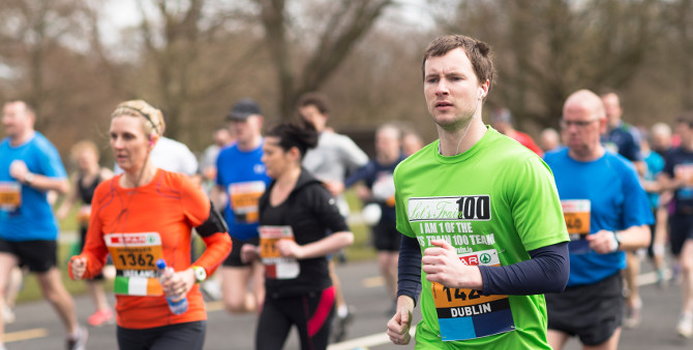While training for a 10K can seem like a difficult process, when it is broken down into a series of steps, it can actually be quite manageable. For starters, be sure to learn exactly what a 10K run entails. After you have done this, get a great pair of running shoes. High quality shoes that fit your feet can make the difference between a mediocre run and the race of your life.
1. Understand What a 10K Run EntailsOne of the most important tips involved in training for a 10K race is learning what the race actually entails. A 10K race is actually only 6.2 miles long (or 10 kilometers). For best results, track out a distance of 6.2 miles in order to understand exactly how far this distance is.
2. Get a Great Pair of Running ShoesOnce you have learned the demands of the 10K and have committed to it, you must get a great pair of running shoes. Running shoes will not only help to prevent injury during running, but in some cases may actually help to improve performance. For best results, find a running store that specializes in selling distance running shoes. Ask a salesperson to examine your stride before suggesting a great pair of shoes. Most reputable stores will allow you to "test drive" the shoes on a treadmill before making a final decision.
3. Start SlowNow that you have a great pair of running shoes, you can begin your training. For best results when training for a 10K, don't try to run 6 miles on your first attempt. Instead, start slowly and gradually work your way up. For example, on the first day you may only run for around half a mile. Don't fret if this is all you can do. Instead, use this as your springboard. Gradually add a little more distance each week as you train for your event. Research has found that for best results, you should not increase total distance by more than 10 percent per week.
4. Set a Goal for YourselfOnce you have a basic endurance set, you should begin to set a goal for yourself. For many people, this can be one of the most challenging parts of training for a 10K. Try to determine your fastest time that you reasonably think you can run or walk a 10K. Be sure to challenge yourself, without being too aggressive. In addition, consider setting small goals for yourself, and rewarding yourself as you achieve them. For example, give yourself a small gift the first time you can run one mile without stopping. Once you have reached your first goal, set another one, and continue doing so until you have reached your long term goal of finishing the race in the time you hoped for.



